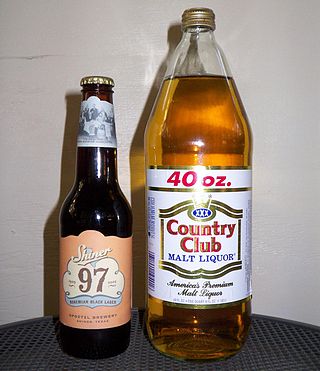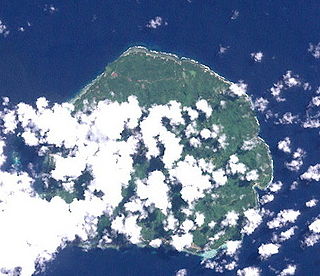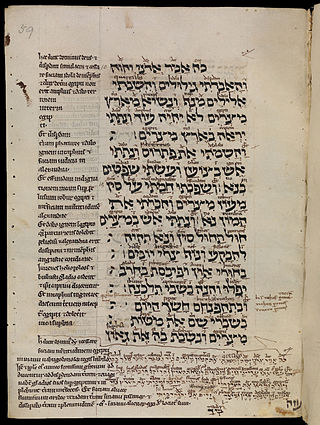
United States customary units form a system of measurement units commonly used in the United States and most U.S. territories since being standardized and adopted in 1832. The United States customary system developed from English units that were in use in the British Empire before the U.S. became an independent country. The United Kingdom's system of measures evolved by 1824 to create the imperial system, which was officially adopted in 1826, changing the definitions of some of its units. Consequently, while many U.S. units are essentially similar to their imperial counterparts, there are noticeable differences between the systems.

The bluefish is the only extant species of the family Pomatomidae. It is a marine pelagic fish found around the world in temperate and subtropical waters, except for the northern Pacific Ocean. Bluefish are known as tailor in Australia and New Zealand, elf and shad in South Africa. It is a popular gamefish and food fish.

The California gold rush (1848–1855) began on January 24, 1848, when gold was found by James W. Marshall at Sutter's Mill in Coloma, California. The news of gold brought approximately 300,000 people to California from the rest of the United States and abroad. The sudden influx of gold into the money supply reinvigorated the American economy; the sudden population increase allowed California to go rapidly to statehood in the Compromise of 1850. The gold rush had severe effects on Native Californians and accelerated the Native American population's decline from disease, starvation, and the California genocide.

Ouray is a home rule municipality that is the county seat of Ouray County, Colorado, United States. The city population was 898 as of the 2020 census. The Ouray Post Office has the ZIP Code 81427. Located at an elevation of 7,792 feet (2,375 m), Ouray's climate, natural alpine environment, and scenery have earned it the nickname "Switzerland of America".

The Shipping Forecast is a BBC Radio broadcast of weather reports and forecasts for the seas around the British Isles. It is produced by the Met Office and broadcast by BBC Radio 4 on behalf of the Maritime and Coastguard Agency. The forecast dates back over 150 years. There are currently two or three broadcasts per day, at 00:48, 05:20, and 17:54 UK local time.

Greenstone is a single-tier municipality in the Canadian province of Ontario with a population of 4,636 according to the 2016 Canadian census. It stretches along Highway 11 from Lake Nipigon to Longlac and covers 2,767.19 km2 (1,068.42 sq mi).

Malt liquor is a type of mass market beer with high alcohol content, most closely associated with North America. Legally, it often includes any alcoholic beverage with 5% or more alcohol by volume made with malted barley. In common usage, it refers to beers of high alcohol content, generally above 6%, which are made with ingredients and processes resembling those for American-style lagers.

Dogger Bank is a large sandbank in a shallow area of the North Sea about 100 kilometres off the east coast of England.

Long Forties is a zone of the northern North Sea that is fairly consistently forty fathoms deep.

Kırklareli Province is a province in northwestern Turkey on the west coast of the Black Sea. The province neighbours Bulgaria to the north along a 180-kilometre (110 mi) long border. It borders the province of Edirne to the west and the province of Tekirdağ to the south and province of Istanbul to the southeast. Kırklareli is the capital city of the province. Its area is 6,459 km2, and its population is 369,347 (2022). The province's and its central city's name means "the land of the forties" in Turkish and it may refer either to the forty Ottoman ghazis sent by the sultan Murad I to conquer the city for the Ottoman Empire in the 14th century or to the forty churches reported to be situated in the region before the Ottoman conquest, as attested by the former name of Kırklareli. There is a memorial on a hilltop in Kırklareli city, called "Kırklar Anıtı" to honor the Ottoman conquerors. The province is bisected by the Yıldız (Istranca) mountain range. The north and northeastern parts of the province are among the least populated and under developed parts of Turkey. The districts to the south and west are more populated because the land is better suited for agriculture and industrial development. The north and eastern parts of the province are dominated by forests. Therefore, forestry is an important means of living in these areas. Fishing is done along the Black Sea coast.

The Homestake Mine was a deep underground gold mine located in Lead, South Dakota. Until it closed in 2002 it was the largest and deepest gold mine in the Western Hemisphere. The mine produced more than forty million troy ounces of gold during its lifetime. This is about 2,500 cubic feet (71 m3) or a volume of gold roughly equal to 18,677 US gallons.

Lihir Island is the largest island in the Lihir group of islands, 22 km (14 mi) long and 14.5 km (9.0 mi) wide, in Papua New Guinea's New Ireland Province. It consists of a complex of several overlapping basaltic stratovolcanoes rising 700 m above sea level. While the volcanoes are not currently active, geothermal activity is still present. The island is in what was the forearc basin associated with the subduction of the Pacific Plate beneath the North Bismarck Plate. Subduction stopped about 10 million years ago with the collision of the Ontong Java plateau with the subduction zone.

Gold became highly concentrated in California, United States as the result of global forces operating over hundreds of millions of years. Volcanoes, tectonic plates and erosion all combined to concentrate billions of dollars' worth of gold in the mountains of California. During the California Gold Rush, gold-seekers known as "Forty-Niners" retrieved this gold, at first using simple techniques, and then developing more sophisticated techniques, which spread around the world.

Simberi Island is a volcanic island in the Tabar Group, in Papua New Guinea's New Ireland Province.

The Forties pipeline system (FPS) is a major pipeline transport network in the North Sea. It is owned and operated by Ineos and carries 30% of the UK's oil, or about 550 thousand barrels per day of oil per day, to shore. It carries liquids production from 85 fields in the North Sea and several Norwegian fields on behalf of around 40 companies. The system has a capacity of 575,000 barrels of oil a day.

Loch Ewe is a sea loch in the region of Wester Ross in the Northwest Highlands of Scotland. The shores are inhabited by a traditionally Gàidhlig-speaking people living in or sustained by crofting villages, the most notable of which, situated on the north-eastern shore, is the Aultbea settlement.
Gold mining in Alaska, a state of the United States, has been a major industry and impetus for exploration and settlement since a few years after the United States acquired the territory in 1867 from the Russian Empire. Russian explorers discovered placer gold in the Kenai River in 1848, but no gold was produced. Gold mining started in 1870 from placers southeast of Juneau, Alaska.
40 or forty commonly refers to:
The Raid on Tabasco, Capture of Tabasco or Newport's 2nd Expedition of 1599 was an English military expedition during the Anglo–Spanish War that captured the Spanish port settlement of Tabasco in New Spain. The English under Christopher Newport then occupied the town and gained a significant amount of booty before heading home.

Ezekiel 4 is the fourth chapter of the Book of Ezekiel in the Hebrew Bible or the Old Testament of the Christian Bible. This book is one of the Books of the Prophets and contains the prophecies attributed to the prophet/priest Ezekiel. In this chapter, following God's command, Ezekiel performs a sign-act, a symbolic representation of the siege of Jerusalem and resulting famine.















